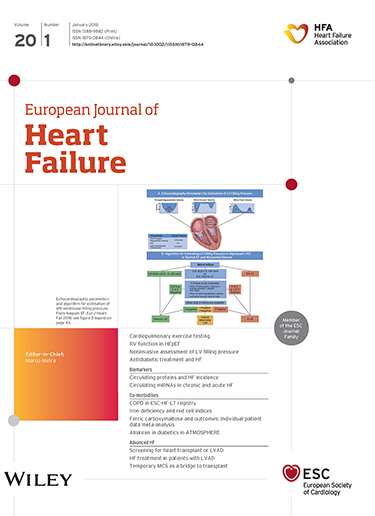Factors associated with the use of guideline-directed medical therapy in patients with left ventricular assist device
Abstract
Aims
Societal guidelines have recently supported the use of guideline-directed medical therapy (GDMT) in patients with left ventricular assist device (LVAD) to promote ventricular recovery. We sought to characterize patient factors associated with use of GDMT in durable LVAD recipients.
Methods and results
We performed a retrospective analysis of patients with a HeartMate 3 (HM3) LVAD at our institution, including comprehensive data from the past 12 months. The GDMT score (0–8) factored in doses of beta-blocker (BB), angiotensin-converting enzyme inhibitor/angiotensin receptor blocker (ACEi/ARB), mineralocorticoid receptor antagonist (MRA), sodium–glucose cotransporter 2 inhibitor (SGLT2i), angiotensin receptor–neprilysin inhibitor (ARNI), isosorbide dinitrate/hydralazine (ISDN/HYD). Our cohort consisted of 270 patients (mean age 63 years, 77% male). Median GDMT score was 3 ± 1.7, and 155 patients (57.4%) had a score of 3 or lower. Prescription rates were 50% for BB, 74.1% for ACEi/ARB/ARNI, 14.8% for SGLT2i, 47% for MRA, and 19.6% for ISDN/HYD. On univariable logistic regression, increasing age, right ventricular dysfunction, estimated glomerular filtration rate <60 ml/min/1.7 3 m2, and destination therapy strategy were associated with a GDMT score below the median. Only age remained a significant predictor after adjustment. In multivariable analysis for individual drugs, right ventricular dysfunction was linked to non-use of BB, and age and Black race were associated with non-use of MRA and use of ISDN/HYD, but no significant predictors were identified for other therapies.
Conclusion
While advancing age is associated with lower use of GDMT in HM3 recipients, other patient factors do not adequately explain low prescription rates. This highlights significant opportunity to improve the use of GDMT in LVAD patients.


 求助内容:
求助内容: 应助结果提醒方式:
应助结果提醒方式:


